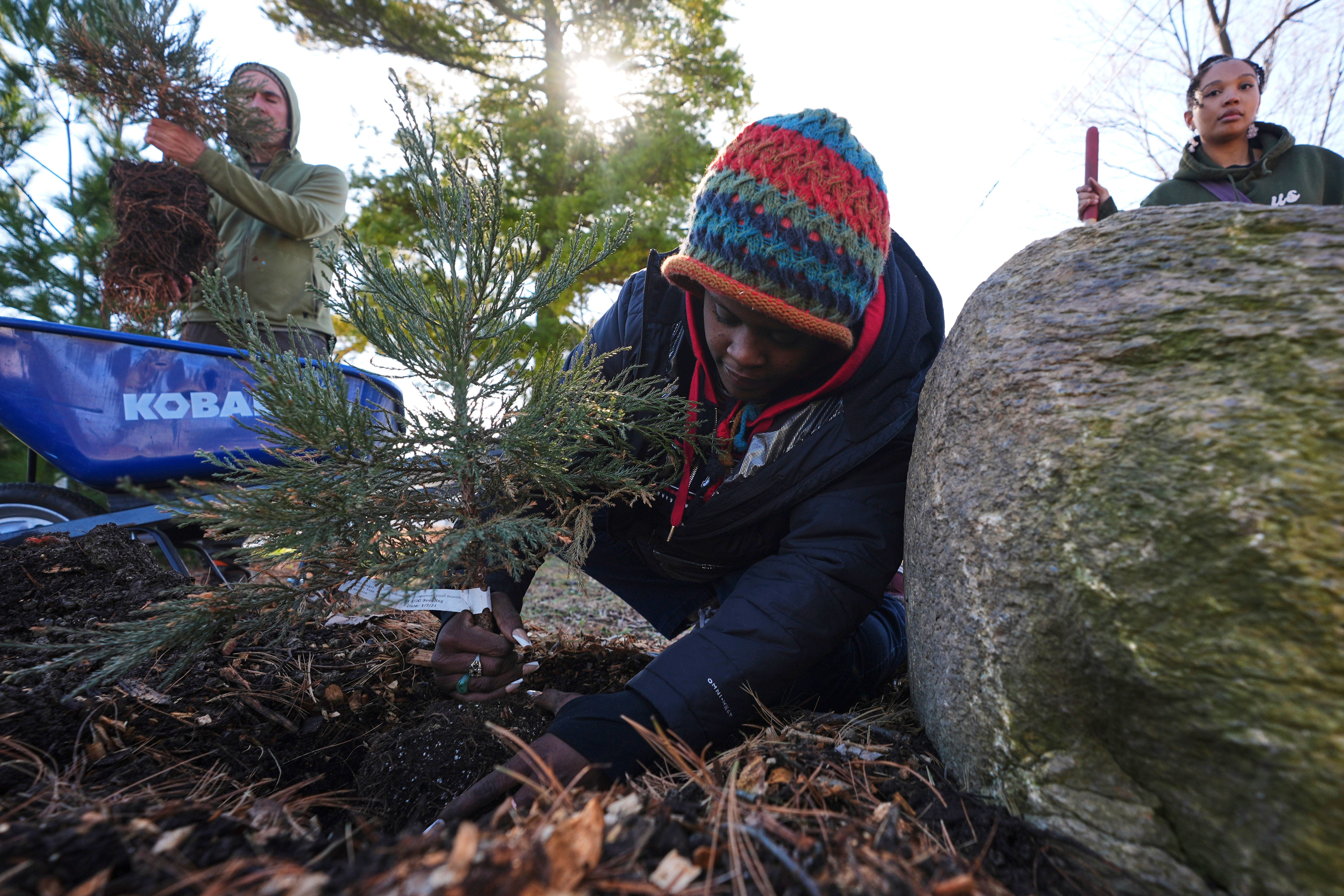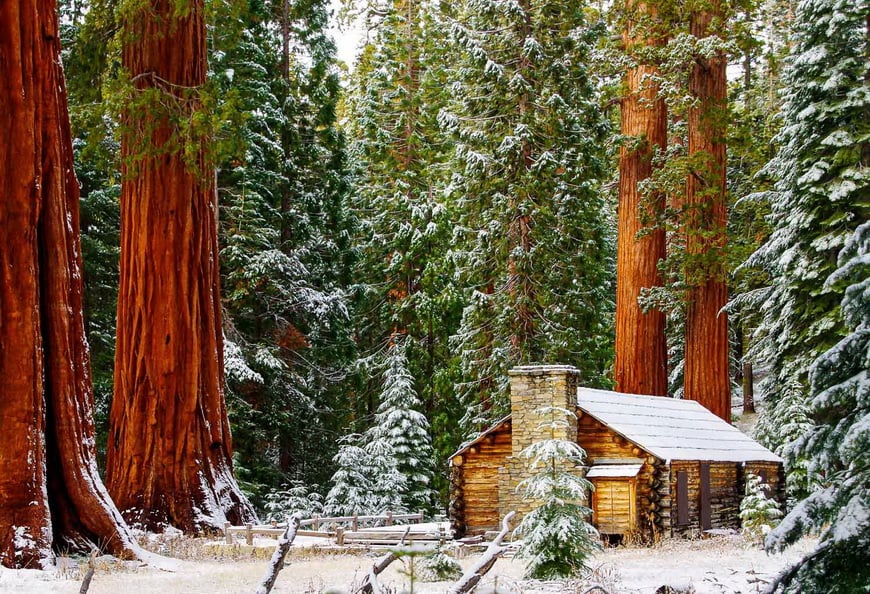Environment & Energy
Related: About this forumGiant Sequoias Are Taking Root in an Unexpected Place: Detroit
Arborists are planting urban groves of the world’s largest trees in one of the city’s most blighted neighborhoods
Sarah Kuta - Daily Correspondent
May 5, 2025

Arborists are reforesting Detroit's Poletown East neighborhood with giant sequoias and other species of trees. AP Photo / Paul Sancya
Giant sequoias are typically found in California’s Sierra Nevada mountain range, where they reach heights of up to 300 feet. Now, however, with help from conservationists, the world’s largest trees are spreading to new places. In Detroit, arborists are planting dozens of giant sequoia saplings in a blighted area in hopes of creating an urban forest that will clean the air, provide shade and, overall, improve residents’ quality of life.
The trees are being planted in Detroit’s Poletown East neighborhood through a partnership between two nonprofits, Arboretum Detroit and Archangel Ancient Tree Archive.
The effort started in 2020 and 2021, with the planting of 20 giant sequoia trees on private property and vacant lots owned by Arboretum Detroit. It continued late last month, as volunteers convened on Earth Day to plant roughly 100 additional saplings.
“There’s not another urban area I know of that has the kind of potential that we do to reforest,” says Andrew “Birch” Kemp, co-director and board president of Arboretum Detroit, to the Associated Press’ Corey Williams. “We could all live in shady, fresh air beauty. It’s like no reason we can’t be the greenest city in the world.”
The Earth Day saplings are roughly a foot tall. But, if all goes as planned, they’ll rocket to roughly 15 feet tall—and counting—over the next decade. The trees can grow up to two feet each year.
More:
https://www.smithsonianmag.com/smart-news/giant-sequoias-are-taking-root-in-an-unexpected-place-detroit-180986557/
Demovictory9
(36,809 posts)spinbaby
(15,291 posts)Sometime in the 19th century, it became fashionable to plant giant sequoias in Britain, resulting in more giant sequoias in Britain than in California.
Judi Lynn
(163,714 posts)Never would have imagined it would happen.
I feel so strange! Embarrassed to admit it, but I hafta. I actually believed those trees only grew in California! Derp!
I actually feel better, learning what you've posted! Thank you.
markodochartaigh
(3,402 posts)One of my cousins in the Bay Area has a neighbor who planted a redwood just the other side of the back fence. Sure, they are native, at least to an area twenty miles away in a different biotope, but that tree is more than 100 feet tall now and has branches 50 feet up that are as massive as many full grown trees. They have few high winds there, but sooner or later...
Judi Lynn
(163,714 posts)
NNadir
(36,196 posts)...heat treatment of the seeds, usually provided by fire, to germinate, an evolutionary advance that allows them less interfering shade of competitor plants. They grow rather slowly for the first hundred years or so, but take off in later centuries.
We have a sequoia in New Jersey at Marquand Park in Princeton. I assume it's old, since it's rather large, but nothing quite like what one sees in California's national parks.
Judi Lynn
(163,714 posts)Marquand Park has a distinguished resident. I wonder if it's the oldest tree in the park already.
The thought of fire-resistant seeds is unexpected and comforting.
Thank you.
NNadir
(36,196 posts)...the sequoia in the park is not a Giant Sequoia but is rather a Dawn Redwood, a sequoia species once thought extinct but discovered in China in the 1940s. I knew that but being old I forgot it.
Previously the Dawn Redwood was only known in fossils.
It is one of three sequoia species along with the two that grow in California.
One of the best moments of my life was staying with my wife in a cabin in a grove of coastal redwoods in Big Sur. They are remarkable trees but a different species than the Giant Sequoia in the national parks in California.
I believe the giant sequoia is the only species that requires fire. If one goes one can see the burn marks on many of the trees. They are fire resistant trees, but poor fire management practices and extreme global heating have increased the temperatures of the fires when compared to those in which they evolved. This is thought to be problematic.
hatrack
(63,058 posts)IIRC, their cones are stuck shut until fire burns away the resin.
NNadir
(36,196 posts)The issue though, as I suggested is that in these times fires are hotter than those among which these species evolved, and further, given the droughts as the atmosphere collapses, the wood may be much drier.
It may take natural selection millenia, tens, hundreds of millennia to sort this out.